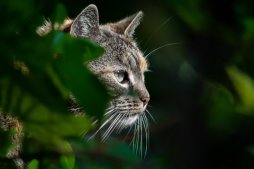Innovative Research on Bats and Disease Prevention for Conservationists

Bats play a crucial role in our ecosystems, acting as pollinators, seed dispersers, and pest controllers. However, concerns about viruses associated with bats have led to increased fear and misunderstanding. This article explores innovative research aimed at balancing bat conservation efforts with disease prevention strategies.
Understanding the Importance of Bats in Ecosystems
Bats contribute significantly to biodiversity by controlling insect populations, pollinating plants, and dispersing seeds. Their ecological services support agriculture and forest health. Recognizing their importance is essential when addressing concerns related to disease transmission.
Addressing Virus Fears Linked to Bats
Certain viruses have been traced back to bats as natural reservoirs, leading to public health worries. However, it’s important to note that direct transmission from bats to humans is rare and often involves intermediate hosts or human interference with bat habitats.
Innovative Research Approaches in Bat Conservation
Researchers are developing novel methods such as non-invasive sampling techniques and genomic studies to monitor bat health without causing disturbance. These approaches help identify potential zoonotic pathogens early while preserving bat populations.
Disease Prevention Strategies for Conservationists
Conservationists are implementing guidelines including minimizing habitat disruption, educating communities about safe practices around bats, and enhancing surveillance programs. These measures reduce risks while supporting effective conservation efforts.
Collaborative Efforts for Balanced Outcomes
Successful bat conservation amidst virus fears requires collaboration between ecologists, public health experts, policymakers, and local communities. Combining scientific research with education fosters coexistence that benefits both human health and biodiversity.
By embracing innovative research and proactive disease prevention measures, conservationists can protect vital bat populations while addressing virus-related concerns. This balanced approach ensures the continued benefits bats provide within our ecosystems.
This text was generated using a large language model, and select text has been reviewed and moderated for purposes such as readability.











